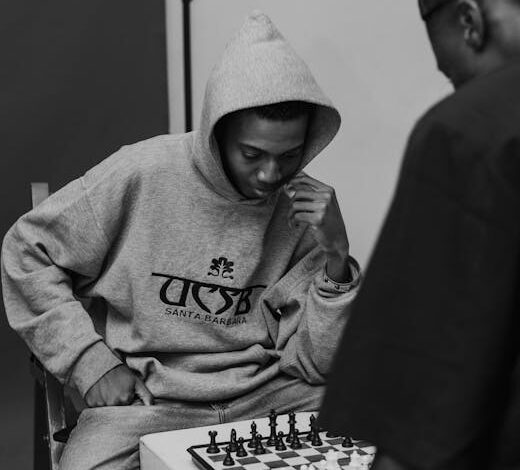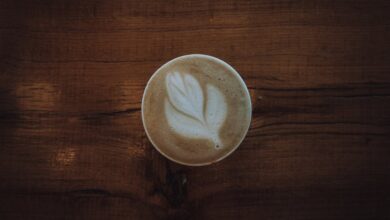Mapping the Unseen: The Elusive Decision Boundary

Ever wondered what happens in the “mind” of an AI when it looks at an image and confidently declares, “That’s a cat!” or “That’s a tumor!”? For all the incredible feats artificial intelligence achieves daily, understanding *how* it arrives at these conclusions often feels like peering into a black box. We see the input, we see the output, but the intricate dance of neurons and weights in between remains largely opaque. This challenge is at the heart of much AI research, pushing us to find innovative ways to visualize, understand, and even transfer the subtle wisdom an AI accumulates.
One of the most profound elements of an AI’s internal logic is its “decision boundary.” Think of it as an invisible line or surface in a complex, multi-dimensional space that separates one category from another. Crossing this boundary means switching from classifying something as a cat to classifying it as a dog, or from benign to malignant. But how do you capture something so abstract, something that isn’t explicitly coded but emerges from millions of training examples? A fascinating recent paper, “Dusted Input Images: Visualizing Decision Boundary Distillation,” by a team of researchers from Hong Kong University of Science and Technology (Guangzhou) and Tencent Youtu Lab, offers a surprisingly elegant and effective answer.
They introduce a novel concept: “dusted input images.” It’s not just a clever phrase; it’s a powerful technique designed to illuminate these hidden boundaries and, crucially, to transfer that invaluable knowledge to other AI models. Let’s delve into what this means and why it’s such a significant step forward in making AI more transparent and robust.
Mapping the Unseen: The Elusive Decision Boundary
Before we sprinkle any dust, let’s clarify what we’re trying to visualize. In machine learning, especially with classification tasks, a model learns to map input data (like an image) to an output label (like its category). The decision boundary is the theoretical line, plane, or hyperplane that separates these different classes in the feature space learned by the model. If a data point falls on one side, it’s classified one way; if it falls on the other, it’s classified differently.
For simpler models, like a basic linear classifier, you might actually be able to draw this line. But for deep neural networks, with their millions of parameters and layers extracting incredibly abstract features, these boundaries become incredibly complex and high-dimensional. They’re like ghost lines in a phantom landscape – vital for the AI’s operation, but almost impossible for a human to directly perceive or articulate. This ‘intractability’ is a major hurdle in understanding AI decision-making and diagnosing its failures.
Imagine you’re trying to map the coastline of a hidden island from a distance. You can’t land on it, and the fog is thick. You need a way to probe its edges, to discern where the land ends and the sea begins. This is essentially the challenge researchers face with decision boundaries.
Why Traditional Methods Fall Short
Existing methods often focus on understanding *which* features contribute to a decision or *why* a particular sample was classified a certain way. While valuable, they don’t directly map the *boundary itself*. They tell us about specific points, but not the entire fence line. This is where the concept of “dusted input images” steps in, offering a more direct and systematic approach to interact with these elusive borders.
Dusted Input Images: Poking the Edges of AI’s Perception
So, what exactly are “dusted input images”? The core idea is brilliantly simple yet profound: take an existing input image and subtly (or not so subtly) “dust” its input space with random Gaussian noise. Think of it like adding a pinch of digital static or a slight blur. But this isn’t just about making the image look different; it’s about a strategic perturbation.
The goal isn’t to create a new, distinct image. Instead, the authors propose that by introducing this noise, some of these “dusted” samples will be relocated to the *peripheral area* of the learned decision boundary. They’ll be pushed right up against the invisible fence, or even across it. This strategic pushing allows the previously “intractable decision boundary” to be “manifested to some extent.” In essence, we’re making the boundary reveal itself by testing its limits.
More Than Just Augmentation
It’s crucial to understand that this process differs significantly from standard image augmentation techniques used during training. Image augmentation, like random cropping or slight rotations, aims to increase the diversity of training data while ensuring the original label remains unequivocally correct. The model still sees a cat, just from a slightly different angle.
Dusted input images, however, embrace a “large deviation and allowance of the polluted images to be classified to different classes besides their original labels.” In fact, the researchers *hope* these polluted images are prone to be classified to a *different category* than their original. Why? Because the boundary can only truly be known “when we know what is and what is not.” If an image of a cat, after dusting, suddenly starts looking like a dog to the AI, you’ve just found a point on the decision boundary between “cat” and “dog.” You’ve mapped a crucial part of the AI’s “line in the sand.”
Visually, as the authors note, “the category of each image becomes vague after dusting.” This vagueness isn’t a bug; it’s the feature. It’s a deliberate blurring that helps us see the dividing lines, much like how a cartographer might use sonar to map an underwater ridge – not by seeing the ridge directly, but by observing how the pings bounce back differently at its edges.
From Visualization to Distillation: Transferring AI’s Wisdom
Once we can visualize and interact with these decision boundaries through dusted input images, the next logical and incredibly powerful step is to *distill* this knowledge. Knowledge distillation is a well-established technique where a smaller, more efficient “student” model learns from a larger, often more complex “teacher” model.
Traditionally, distillation often focuses on transferring the teacher’s final output probabilities (soft labels) or intermediate feature representations. However, by explicitly focusing on the *decision boundary* itself, the authors propose a more profound form of knowledge transfer. It’s like teaching a student not just *what* the teacher decided, but *why* they decided it – the underlying rules and distinctions that define the categories.
The paper’s methodology involves “decision boundary-aware distillation.” This means the student model isn’t just trying to mimic the teacher’s answers; it’s trying to mimic the teacher’s *understanding* of where the boundaries lie. By feeding these strategically “dusted” inputs, which sit right on the fence of classification, to both teacher and student, the student learns to respect and reproduce these critical dividing lines.
The Power of Knowing the “Why”
Imagine teaching someone to differentiate between two types of mushrooms. You could just show them a bunch of labeled pictures. Or, you could show them pictures where the mushroom is slightly decayed, or partially eaten, or seen from an unusual angle, right at the point where it becomes ambiguous – forcing them to really understand the subtle defining features. That’s what boundary distillation with dusted images aims to do for AI.
This approach leads to student models that are not only more efficient but also potentially more robust and generalizable. They learn the nuanced distinctions that define categories, rather than simply memorizing common patterns. This makes them less prone to being fooled by adversarial attacks or encountering out-of-distribution data, as they have a more intrinsic understanding of their classification task.
The Road Ahead: Smarter, More Robust AI
The implications of “Dusted Input Images: Visualizing Decision Boundary Distillation” are far-reaching. By providing a tangible way to interact with and understand the elusive decision boundaries within deep neural networks, this research paves the way for several exciting advancements:
- Improved Model Robustness: Student models trained with decision boundary distillation are likely to be more resilient to perturbations and novel inputs, as they have a deeper grasp of classification rules.
- Enhanced Explainability: While not a full explainability solution, understanding where boundaries lie contributes significantly to demystifying AI’s decision-making process.
- Efficient AI Deployment: Smaller, more robust student models can be deployed more effectively on edge devices, in real-time applications, and in resource-constrained environments without sacrificing critical performance or reliability.
- Foundational Research: This method provides a new tool for researchers to probe and understand the internal representations of complex AI models, opening doors for further theoretical and practical breakthroughs.
The authors, Qiang Nie, Weifu Fu, Yuhuan Lin, Jialin Li, Yifeng Zhou, Yong Liu, and Chengjie Wang, have contributed a significant piece to the puzzle of AI understanding. Their work reminds us that sometimes, to see something clearly, you first have to be willing to blur the edges, to “dust” the input, and observe how the system responds at its most vulnerable points. It’s a testament to the ongoing innovation in AI, pushing us towards systems that are not just powerful, but also interpretable and trustworthy.
As AI continues to integrate deeper into our lives, techniques like decision boundary distillation using dusted input images will become indispensable. They don’t just help us build smarter machines; they help us build machines we can truly understand and, consequently, trust.





